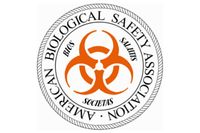Dr. Sihe Wang is Section Head and Medical Director of Clinical Biochemistry and Director of Clinical Biochemistry Fellowship Training Program, Cleveland Clinic, Cleveland, Ohio. He also chairs the clinical chemistry integration effort for the Cleveland Clinic Health System which ...
See moreProgram Committee Share
-
Sihe Wang
-
Gary Garrety
Gary Garrety is the Operations Manager for the Prescription Monitoring Program at the Washington State Department of Health. In his ten years of government service for the state of Washington he's worked to support health professionals struggling with substance misuse issues ...
See more -
Damien Gruson
Professor Damien Gruson was awarded his degree of Pharmacist and later of Specialist in Laboratory Medicine from the Catholic University of Louvain, Brussels, Belgium. He is the head of the department of Clinical Biochemistry of the Cliniques Universitaires Saint Luc. He is also ...
See more -
Brian McNally
Brian McNally, PhD is a Vice President at Kx Advisors and is based in Washington, DC. Brian brings his deep expertise in diagnostics and life sciences to create tailored growth strategies for his clients. He specializes in corporate strategy, product development, market sizing ...
See more
Clinical Diagnostics & Research Virtual Event Series 2019

The 10th Annual Event in the Clinical Diagnostics & Research Virtual Event Series is now available On Demand! This years event brings together clinicians, researchers, medical experts and professionals for the tenth year in a row, elevating the level of collaboration and in turn, advancing clinical diagnostics, research and medicine.
Thousands will join in discussion of the continuous progress made with advances in laboratory testing and patient care and treatment. With new technologies and treatments available, updates in regulatory processes are also necessary to ensure patient safety and proper practices. This complimentary conference offers an amazing opportunity to benefit from interacting with a global community of like-minded colleagues from the comfort of home.
This years event includes the following tracks and topics:
- Emerging Technologies
- Digital Lab
- Artificial Intelligence
- Sustainability
- Opioid Crisis
- Epidemiology
- Non-Opioid Alternative
- Treatments for Pain Management
- Monitoring Patients' Opioid Use via Urinalysis and other Mediums
- Regulatory
- Proficiency testing for HgA1c
- Impact of PAMA
- Clinical Lab Value
- TDM for Biologics
- Sepsis Management
- Laboratory Stewardship
Our virtual conference allows you to participate in a global setting with no travel or cost to you. The event will remain open 6 months from the date of the live event. The webinars will be available for unlimited on-demand viewing. This virtual conference also offers increased reach for the global microbiology community with a high degree of interaction through live-streaming video and chat sessions.
Continuing Education
LabRoots is approved as a provider of continuing education programs in the clinical laboratory sciences by the ASCLS P.A.C.E. ® Program. By attending this event, you can earn 1 Continuing Education credit per presentation for a maximum of 14 credits.
Use #LRclinical to follow the conversation!
Agenda Share
-
NOV 14, 2019 1:30 PM PST
Strategies to Improve Laboratory Stewardship
Gary Procop, MD, MS
Medical Director & Co-Chair, Enterprise Laboratory Stewardship Committee, Enterprise Medical Operations, & Director of Microbiology, Virology, Mycology & Parasitology, Clevelaland ClinicBIOGRAPHY -
NOV 14, 2019 12:00 PM PST
Panel Discussion: Emerging technologies in laboratory medicine, opportunities and challenges
Anna Fuezery, PhD, DABCC, FCACBCorresponding member of IFCC C-MHBLM, North Sector POCT...Damien Gruson, PhDProfessor, Head of the Department of Clinical Biochemis... -
NOV 14, 2019 12:00 PM PST
Thyroid autoimmunity and female infertility
David Unuane, MD, PhD
Kliniekhoofd Endocrinologie - Diabetologie, University Hospital BrusselsBIOGRAPHY -
NOV 14, 2019 10:30 AM PST
Interferences with thyroid function tests and patient safety
Damien Gruson, PhD
Professor, Head of the Department of Clinical Biochemistry, Cliniques Universitaires Saint LucBIOGRAPHY -
NOV 14, 2019 9:00 AM PST
Discovering latent knowledge by applying machine learning techniques to QIAGEN resources
-
NOV 14, 2019 9:00 AM PST
Drug testing in Regulatory Monitoring
John Furman, PhD, MSN, COHN-S
Director Washington Health Professional Services, Nursing Care Quality Assurance Commission, Washington State Department of HealthBIOGRAPHY -
NOV 14, 2019 9:00 AM PST
The Role of Proficiency Testing in Achieving Global Outcomes for Hemoglobin A1c
Paul M. Yip, PhD, FCACB, DABCC
Head of Clinical Biochemistry, Sunnybrook Health Sciences Centre, and Associate Professor, Faculty of Medicine, University of TorontoBIOGRAPHY -
NOV 14, 2019 7:30 AM PST
Keynote Presentation: The Opioid Epidemic in Ohio - A Crime Laboratory Perspective
Douglas Rohde, MS, F-ABC, MLT(ASCP)
Supervisor of Chemistry & Toxicology, Lake County Crime LaboratoryBIOGRAPHY -
NOV 14, 2019 6:00 AM PST
Future Directions of Sepsis Management: The Emergence of Artificial Intelligence and the Laboratory Diagnostic Ecosystem
Nam K. Tran, PhD, HCLD (ABB), FACB
Director of Clinical Chemistry, Special Chemistry/Toxicology, Point-of-Care Testing, and SARC Sections, Pathology and Laboratory Medicine, University of California, Davis, School of MedicineBIOGRAPHY
- Clinical Lab Value
-
NOV 14, 2019 6:00 AM PST
Future Directions of Sepsis Management: The Emergence of Artificial Intelligence and the Laboratory Diagnostic Ecosystem
Nam K. Tran, PhD, HCLD (ABB), FACB
Director of Clinical Chemistry, Special Chemistry/Toxicology, Point-of-Care Testing, and SARC Sections, Pathology and Laboratory Medicine, University of California, Davis, School of MedicineBIOGRAPHY -
NOV 14, 2019 9:00 AM PST
Drug testing in Regulatory Monitoring
John Furman, PhD, MSN, COHN-S
Director Washington Health Professional Services, Nursing Care Quality Assurance Commission, Washington State Department of HealthBIOGRAPHY -
NOV 14, 2019 10:30 AM PST
Interferences with thyroid function tests and patient safety
Damien Gruson, PhD
Professor, Head of the Department of Clinical Biochemistry, Cliniques Universitaires Saint LucBIOGRAPHY -
NOV 14, 2019 12:00 PM PST
Thyroid autoimmunity and female infertility
David Unuane, MD, PhD
Kliniekhoofd Endocrinologie - Diabetologie, University Hospital BrusselsBIOGRAPHY -
NOV 14, 2019 1:30 PM PST
Strategies to Improve Laboratory Stewardship
Gary Procop, MD, MS
Medical Director & Co-Chair, Enterprise Laboratory Stewardship Committee, Enterprise Medical Operations, & Director of Microbiology, Virology, Mycology & Parasitology, Clevelaland ClinicBIOGRAPHY - Emerging Technologies
-
NOV 14, 2019 9:00 AM PST
Discovering latent knowledge by applying machine learning techniques to QIAGEN resources
-
NOV 14, 2019 12:00 PM PST
Panel Discussion: Emerging technologies in laboratory medicine, opportunities and challenges
Anna Fuezery, PhD, DABCC, FCACBCorresponding member of IFCC C-MHBLM, North Sector POCT...Damien Gruson, PhDProfessor, Head of the Department of Clinical Biochemis... - Opioid Crisis
-
NOV 14, 2019 7:30 AM PST
Keynote Presentation: The Opioid Epidemic in Ohio - A Crime Laboratory Perspective
Douglas Rohde, MS, F-ABC, MLT(ASCP)
Supervisor of Chemistry & Toxicology, Lake County Crime LaboratoryBIOGRAPHY - Regulatory
-
NOV 14, 2019 9:00 AM PST
The Role of Proficiency Testing in Achieving Global Outcomes for Hemoglobin A1c
Paul M. Yip, PhD, FCACB, DABCC
Head of Clinical Biochemistry, Sunnybrook Health Sciences Centre, and Associate Professor, Faculty of Medicine, University of TorontoBIOGRAPHY
Speakers Share
-
Douglas Rohde, MS, F-ABC, MLT(ASCP)
Supervisor of Chemistry & Toxicology, Lake County Crime Laboratory
BIOGRAPHY
-
Benjamin Chaffey, PhD
Global Product Manager, Oncology & Precision Diagnostics, QIAGEN
BIOGRAPHY
-
Alka Chaubey, PhD, FACMG
Head of Cytogenomics and Laboratory Director, Perkin Elmer Genomics
BIOGRAPHY
-
Anna Fuezery, PhD, DABCC, FCACB
Corresponding member of IFCC C-MHBLM, North Sector POCT Medical Lead, Alberta Public Laboratories, Associate Clinical Professor of Laboratory Medicine, University of Alberta
BIOGRAPHY
-
John Furman, PhD, MSN, COHN-S
Director Washington Health Professional Services, Nursing Care Quality Assurance Commission, Washington State Department of Health
BIOGRAPHY
-
Jeff Green
Staff Software Engineer, Qiagen
BIOGRAPHY
-
Damien Gruson, PhD
Professor, Head of the Department of Clinical Biochemistry, Cliniques Universitaires Saint Luc
BIOGRAPHY
-
Gary Procop, MD, MS
Medical Director & Co-Chair, Enterprise Laboratory Stewardship Committee, Enterprise Medical Operations, & Director of Microbiology, Virology, Mycology & Parasitology, Clevelaland Clinic
BIOGRAPHY
-
Nam K. Tran, PhD, HCLD (ABB), FACB
Director of Clinical Chemistry, Special Chemistry/Toxicology, Point-of-Care Testing, and SARC Sections, Pathology and Laboratory Medicine, University of California, Davis, School of Medicine
BIOGRAPHY
-
David Unuane, MD, PhD
Kliniekhoofd Endocrinologie - Diabetologie, University Hospital Brussels
BIOGRAPHY
-
Paul M. Yip, PhD, FCACB, DABCC
Head of Clinical Biochemistry, Sunnybrook Health Sciences Centre, and Associate Professor, Faculty of Medicine, University of Toronto
BIOGRAPHY
-
Illumina
As a startup, Illumina aspired to transform human health. Our initial products enabled researchers to explore DNA at an entirely new scale, helping them create the first map of gene variations associated with health, disease, and drug response. Every breakthrough opened up a new ...
See more -
Waters Corporation
From the everyday consumer to scientists in the laboratory, we all rely on accurate information to make critical decisions. Waters Corporation is the world's leading specialty measurement company focused on improving human health and well-being through the application of ...
See more -
Visiopharm®
Visiopharm® is a world leader in Augmented Pathology™ solutions; that comprise precision pathology and high-throughput pathology for tissue-diagnostics and research. Leading biopharmaceutical companies, contract research organizations (CRO), academic medical centers, and ...
See more -
DSM Pentapharm
PENTAPHARM has a long-standing tradition as an innovative and reliable supplier of active ingredients for the pharmaceutical, diagnostic and cosmetic industry. Our roots as researchers, developers and manufacturers of state-of-the-art products reach back to 1948. PENTAPHARM ...
See more -
Qlucore
Qlucore began as a collaborative research project at Lund University, Sweden, with researchers in the Departments of Mathematics and Clinical Genetics. From the beginning, the main problem the project faced was the vast amount of high-dimensional data generated by microarray ...
-
Bio-Rad Laboratories
Bio-Rad Laboratories (NYSE: BIO and BIOb) continues to play a leading role in the advancement of scientific discovery by offering a broad range of innovative tools and services to the life science research and clinical diagnostics markets. Founded in 1952, Bio-Rad has a global ...
See more -
ELITechGroup
ELITechGroup has been in operation for nearly 50 years and distributes to over 100 countries. Proud to be the World Leader in Aerospray staining technology and Cytocentrifugation, offering the world's most reliable solutions in performance and reliability. ELITechGroup is ...
See more -
LI-COR Biosciences
LI-COR first introduced scientific instruments for plant science research and quickly grew to provide scientists tools for such diverse disciplines as atmospheric research and the study of how proteins interact at the cellular level. LI-COR Biosciences is a global leader in the ...
See more -
The Binding Site
Binding Site is leading the way in Special Protein Diagnostics with Optilite®, the future of special protein testing. Binding Site also offers the market-leading and guidelines-recommended free light chain assay, Freelite®; our newest test, Hevylite®; and an extensive menu of ...
See more -
American Biological Safety Association
The American Biological Safety Association (ABSA) was founded in 1984 to promote biosafety as a scientific discipline and serve the growing needs of biosafety professionals throughout the world. The Association's goals are to provide a professional association that represents the ...
See more -
Diasorin
Diasorin is an Italian multinational biotechnology company that produces and markets in vitro diagnostics reagent kits used in immunodiagnostics and molecular diagnostics.
Event Series

Clinical Diagnostics & Research Virtual Event Series 2026

Clinical Diagnostics & Research Virtual Event Series 2025

Clinical Diagnostics & Research Virtual Event Series 2024

Clinical Diagnostics & Research Virtual Event Series 2023

Clinical Diagnostics & Research Virtual Event Series 2022

Clinical Diagnostics & Research Virtual Event Series 2021

Opioid Crisis Virtual Event Series 2021

Clinical Diagnostics & Research Virtual Event Series 2020

Opioid Crisis Virtual Event Series 2020

Precision Medicine Virtual Event Series 2019

Clinical Diagnostics & Research Virtual Event Series 2018

Precision Medicine Virtual Event Series 2018

Clinical Diagnostics & Research Virtual Event Series 2017

Precision Medicine Virtual Event Series 2017

Clinical Diagnostics & Research Virtual Event Series 2016

Precision Medicine Virtual Event Series 2016

Clinical Diagnostics & Research Virtual Event Series 2015

Clinical Diagnostics & Research Virtual Event Series 2014



























































